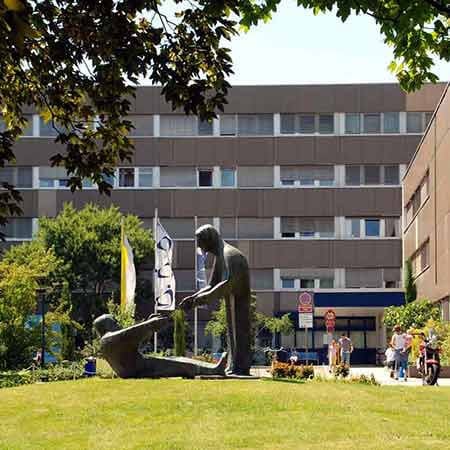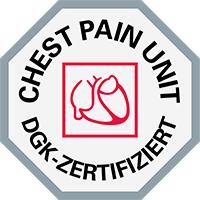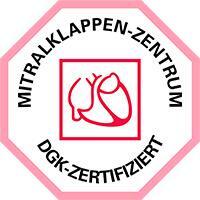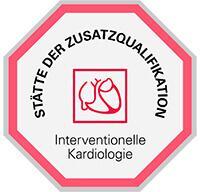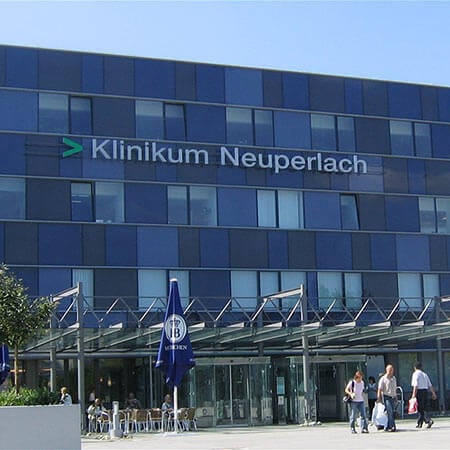A condition involves a disruption of conduction in the interventricular region of the heart. It is a pathological condition characterized by slowing down or complete cessation of excitation impulse conduction along one or several bundle branches. The pathology causes dizziness, short-term fainting, and heart rhythm disturbances.
Content
- Overview
- How does bundle branch block occur?
- Prevalence
- Why does LBBB occur?
- Symptoms of LBBB
- Is LBBB dangerous?
- Treatment in German hospitals
- Are there any preventative measures for the development of LBBB?
- The cost of treatment in hospitals in Germany
Overview
The cardiac muscle has a unique structure and can be represented as a continuous muscle band. The spiral orientation of the left ventricular tissues ensures the opposite rotation of the apex and basal regions, which is a necessary component of effective pumping function. It is accepted that the amplitude of systolic torsion decreases in proportion to the decrease of global contractile function.
Left bundle branch block is an electrocardiographic phenomenon in medicine caused by impaired or complete cessation of excitation through the structure. As a result, myocardial regions supplied by blocked tissues are excited by a roundabout pathway. Even though the most frequent causes of left bundle branch block are IHD and systemic arterial hypertension, they can accompany any cardiovascular disease, including being the first manifestation of myocardial diseases.
How does bundle branch block occur?
The normal cardiac impulse is formed in the sinus node, which is a group of special cells in the heart wall capable of producing an electrical impulse. The impulse is then conducted through special tissues in the heart wall called the cardiac conduction system.
In addition to the sinus node, this system consists of bundle branches and atrioventricular nodes. From there, the conduction spreads to many other tissues.
As a result, when an impulse is normally generated in the heart wall, the heart muscle contracts consistently, rhythmically (i.e., the contractions occur at regular time intervals), with an optimal rate of contraction (60 to 90 beats per minute). The cardiac conduction system is also responsible for the correct sequence of contractions of the atria and ventricles (the chambers, or parts of the heart).
If there is a malfunction of the cardiac conduction system, there is a malfunction of the heart. Heart disease, certain innervation disorders (regulation by the nervous system), exposure to drugs or poisons, and some other factors can lead to abnormalities in the conduction of the cardiac impulse through the bundle branches, resulting in blocks.
Prevalence
The incidence of complete bundle branch block depends on age and sex, reaching 11% in men over 80 years old, occurring 2 times less frequently in women. Results of a Swedish study showed that the prevalence of bundle branch blocks increases from 1% at the age of 50 to 17% at the age of 80.
According to epidemiological studies conducted in the USA during the last thirty years, the prevalence of bundle branch block in the population varies from 0.1% to 0.8%. Left bundle branch block is the most common conduction abnormality in patients with chronic heart failure, accounting for up to 25% of all cases of conduction abnormalities in the population. According to the observation of patients with severe CHF, a new left bundle branch block (LBBB) occurs in 10.9% of patients every year.
Why does LBBB occur?
Most frequently, LBBB occurs due to fibrosis of ventricular conduction tissue with a decrease in the number of conduction fibers per unit volume. Degenerative changes can influence the development of the block. LBBB is common in aortic malformations and hypertension. In young patients with LBBB, heart disease can be associated with previous myocarditis as well as cardiomyopathies. Rarely, various variants of isolated lesions of the cardiac conduction system without association with any cardiovascular diseases are considered idiopathic or congenital conduction heart blocks.
So, is there a genetic predisposition to the left bundle branch block? It is now known that abnormalities of contractile and cytoskeletal proteins, ion channel proteins, and intercellular contacts, as well as transmembrane transporters and their modulators can result in hereditary conduction disorders. Although, most patients with heart disorders are more likely to develop a right bundle branch block than the left one.
It is worth mentioning that the possibility of LBBB is higher when associated with the development of concomitant atrial fibrillation or arrhythmia.
Symptoms of LBBB
Symptoms of left bundle branch block (complete and incomplete) are frequent dizziness, tendency to fainting, and heart palpitations. Such a block is one of the causes of sudden cardiac arrest.
The block of both branches of the left bundle is manifested by pain of varying intensity in the heart, dizziness, and palpitations. Myocardial infarction may be one of the causes of the pathology.
The etiology of early stage LBBB (in asymptomatic patients) is currently unclear. There is no unanimous opinion also regarding prognosis for patients with idiopathic LBBB.
Several epidemiological studies detected favorable LV systolic function in individuals with idiopathic disease younger than 80 years. Thus, people with LBBB were monitored by the means of conventional coronary angiography and multispiral computed tomography, with the diagnostic data being within normal rates.
Several studies also noted a favorable prognosis for patients with LBBB in the absence of CHD confirmed by stress test or coronary angiography. According to some data, good prognosis in asymptomatic patients with LBBB is due to the mild course of the pathology.
Is LBBB dangerous?
Sometimes you can see the inscription "left bundle branch block" on the cardiogram transcript. How dangerous is it and what is it? To answer this question, we need to say a few words about the electrophysiology of the heart muscle.
In some cases, a person develops abnormalities in which the transmission of the electrical impulse through a particular bundle or branch is stopped or altered. Such pathological conditions are called blocks. Some of these blocks are relatively harmless to human health, while some of them require urgent medical intervention.
If it is not caused by another disease, LBBB itself is not very dangerous and does not require any treatment. However, in some cases, it can be a harbinger of quite dangerous complications, for example, develop as a result of an overload of the heart. In such cases, it is necessary to perform additional tests, first of all, echocardiography, which will answer the presence or absence of the above-mentioned pathology. After conducting echocardiography, the doctor will see all sections of the heart, no signs of pulmonary hypertension, no dilated cavities, no pathological changes in the valves, which lead to an overload of the heart. Also, a complete left bundle branch block may be a limitation for taking some antiarrhythmic drugs, which is also important. But the LBBB by itself does nothing wrong, and a person does not die from it.
The peculiarity of LBBB, however, is the fact that it is often more difficult to trace by ECG the possible deterioration of the blood supply of the heart and other signs of changes in the work of the heart in its background. Therefore, such patients, for example, can no longer perform ECG stress test in the form of cycle ergometry or treadmill test, but only stress echocardiography, during which ultrasound of the heart under load is performed, as ECG against the background of complete left bundle branch block is already uninformative.
Left bundle branch block may lead to severe atrioventricular complications or heart failure. The disease similar to RBBB is asymptomatic, so early diagnosis and treatment of the pathology are quite rare. The disease has an unfavorable prognosis if developed due to acute myocardial infarction. In such a case, ventricular arrhythmia, paroxysmal tachycardia, and ventricular fibrillation appear in parallel, which inevitably leads to death.
The blocks may be adventitious, transient, or tachycardia-dependent, i.e. they appear on ECG or 24-hour monitoring only when the pulse is accelerated. Such blocks are not treated, but only observed or symptomatic measures, such as pulse rate reduction with certain medications, are taken. Such blocks may be a restriction to some antiarrhythmic drugs.
In the absence of progressive right bundle branch block, the typical symptomatology of LBBB is not dangerous and does not require any therapeutic correction. Close monitoring by a cardiologist and treatment is required in the case of a widening of the disease boundaries and deterioration of the cardiac conduction system. As clinical practice shows, if patients have no other aggravating pathologies of organs and systems, the treatment prognosis is always favorable.
For patients with the bundle branch block, there is a risk of disease escalation into a complicated atrioventricular block. When the pathology develops due to hypertension, heart failure, or cardiomegaly, the prognosis is quite unfavorable (the possibility of lethal outcome increases many times).
An incomplete left bundle branch block, especially if it is found for the first time, also requires additional investigations in the form of echocardiography to rule out the same causes.
Treatment in German hospitals
Blocks in individual branches of the cardiac conduction system sometimes do not require any special treatment, but may indicate the presence of a heart condition that needs therapy. Some blocks can be treated with drug therapy. On the other hand, there are drugs that themselves contribute to the occurrence of blocks. Therefore, before "treating" a left bundle branch block, it is necessary to clarify whether the patient is taking any medicines, or a combination of medicines that affect intracardiac conduction, their dosage, and the timing of their administration.
At the moment, no specific therapy for LBBB has been developed. In this disorder, the treatment is aimed at the underlying disease. When the LBBB is complicated by angina, arterial hypertension, heart failure, therapy with nitrates, cardiac glycosides, hypotensive agents is carried out. For an AV block, the possibility of a pacemaker implantation is considered. Surgical treatment can be used when therapy with medication is ineffective, fainting is frequent and the disease is aggressive (life-threatening). An electro cardiac pacemaker, being a small device that generates a correct heart rhythm, is implanted. With the disease proceeding without clinical manifestations, dynamic observation is carried out.
If an electric stimulator has been implanted, the patient needs to follow some recommendations:
- Not to undergo diagnostics based on the use of magnetic waves (MRI, NMRI).
- Exclude physical therapy.
- Avoid trauma to the thorax.
Serious disorders can be caused by exposure to electric current. The implantation of a pacemaker is an extremely serious method, which is resorted to only in the most severe cases. To avoid it, it is recommended to undergo timely preventive medical examinations, as well as properly treat the underlying disease.
Complete block of the left bundle branch is not always a direct indication for the pacemaker implantation. This method of therapy is usually resorted to if there is an atrioventricular block.
It should be mentioned that to completely get rid of the problem it is extremely important to treat the underlying disease. That is why it is so important to see a medical specialist in a timely manner, as well as follow all the recommendations.
To treat LBBB, in addition to the therapy of the underlying disease, the doctor prescribes therapy that includes diet changes (restriction of saturated fat and sugar and increase in plant-based fiber intake), supplement therapy, and therapeutic exercises.
Are there any preventative measures for the development of LBBB?
You have to understand that the LBBB is not a verdict. With timely diagnosis and identification of what initiated the disease, there is a good chance of a favorable outcome. Everything depends on the complexity of the underlying disease, the age of the patients, and the concomitant pathologies, if any.
Like any pathological condition in medicine, LBBB is easier to prevent than to treat.
General preventive measures for LBBB include:
- Having a nutrient-dense diet and healthy lifestyle.
- Avoiding excessive excitement, stress, and overwork.
- Getting an adequate amount of sleep.
- Seeking medical help promptly at the appearance of the first unpleasant symptoms.
- Not taking any medications without prescription.
People with a hereditary predisposition to heart disease should be especially attentive to their health. Such patients need to visit a cardiologist regularly for preventive examinations and follow all his recommendations.
The cost of treatment in hospitals in Germany
Many people know very well about the high level of European medicine. High-class specialists, the use of innovative methods, and advanced equipment make foreign clinics very popular. Over the last several years, treatment in hospitals in Germany has proven to be in particular in demand.
Hospitals in Germany are rightfully considered to be leading and innovative in European medicine. People from all over the world come here to improve their health, including in the most complicated cases of cardiac pathologies.
German medical establishments operate in all fields. However, there are several fields where German doctors excel. Most frequently, foreigners come to German hospitals for the treatment of cardiovascular diseases. Cardiac surgery is excellently developed here. There are many effective programs for cardiac rehabilitation.
Okay, so what is the cost of treatment in Germany?
The cost of treatment in hospitals in Germany is the first thing one looks at while planning the treatment in Germany.
In other countries or hospitals that may have the similar to Germany level of quality of medical services provided, prices for treatment may fluctuate in terms of calculation, often to the higher end, because in the course of treatment the need for additional diagnostics or therapeutic procedures may arise, which is quite understandable.
In hospitals in Germany, however, the possibility of significant price fluctuation is minimal. For a decade and a half now, a special pricing system has been introduced in the country, which prevents the cost of treatment from varying significantly.
On average, the cost of treatment in Germany with conservative therapy and Holter monitoring starts at 1,368 EUR, the prices for LBBB diagnosis start at 465 EUR, and the prices for cardiac rehabilitation start at 566 EUR.
If you need any additional information about how to start your treatment in Germany or how much the medical services of hospitals in Germany in particular cost, visit the Booking Health website. You can find answers to your questions about LBBB treatment, in particular in the cardiology section of our website.
Booking Health has tons of useful information that can help you figure out how the organization of treatment abroad works. Booking Health even can have an individual consultation with you to clarify the best hospitals for treatment and prices for treatment in your clinical case. All you need to do is leave a request on the Booking Health website, and our medical advisor will contact you shortly.
Authors: Dr. Nadezhda Ivanisova, Dr. Sergey Pashchenko
